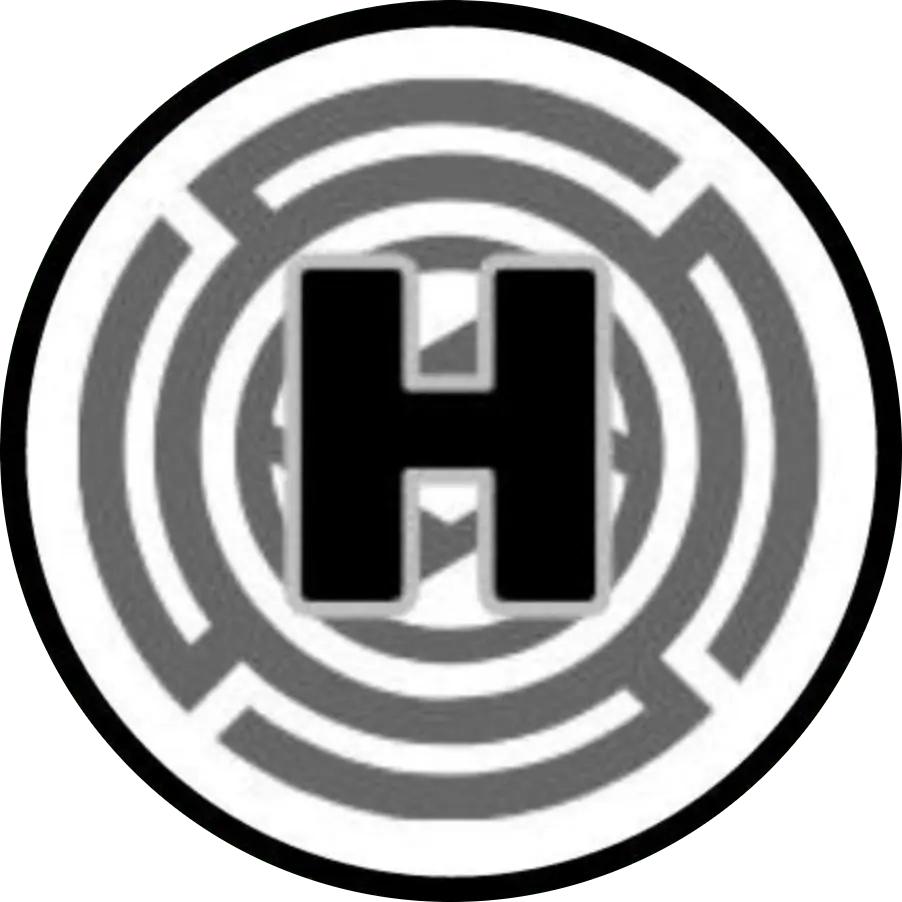Haryana Traffic Police Rules of Road Regulations
Q: According to the Section, which side of the road should the driver of a motor vehicle keep, and where should opposing traffic be allowed to pass?
A: According to this Section , The driver of a motor vehicle shall drive the vehicle as close to the left hand side of the road as may be expedient and shall allow all traffic which is proceeding in the opposite direction to pass on his right hand side.

Q: What are the driving requirements for a motor vehicle driver when turning left and right according to the regulations?
A: The driver of a motor vehicle shall:
1. when turning to left, drive as close as may be to the left-hand side of the road from which he is making the turn and of the road which he is entering;
2. when turning to the right draw as near as may be to the centre of the road along which he is travelling and arrive as near as may be at the left-hand of the road which the driver is entering.
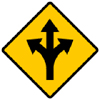
Q: What is the general rule for a driver regarding passing other vehicles to the right according to regulation 4?
A: Except as provided in regulation 5, the driver of a motor vehicles shall pass to the right of all traffic proceeding in the same direction as himself.

Q: What conditions must be satisfied for a driver to pass to the left of another vehicle or a tram car according to regulation 5?
A: The driver of a motor vehicle may pass to the left of a vehicle the driver of which having indicated an intention to turn to the right has drawn to the centre of the Road and may pass on either side, a tram car or other vehicle running on fixed rails whether travelling in the same direction as himself or otherwise provided that in no case shall he pass a tram car at a time or in manner likely to cause danger or inconvenience to other users of the road including persons leaving or about to enter tram cars.
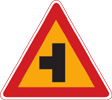
Q: In which situations is overtaking prohibited?
A: The driver of a motor vehicle shall not pass a vehicle traveling in the same direction as himself,
1. If his passing is likely to cause inconvenience or danger to other traffic proceeding in any direction;
2. If he is near a point, a bend or comer or a hill or other obstruction of any kind that renders the road ahead not clearly visible;
3. If he knows that the driver who is following him has begun to overtake him;
4. If the driver ahead of him has not signalled that he may be overtake.
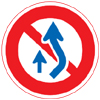
Q: What does the regulation on "Overtaking not to be Obstructed" specify about the conduct of drivers in relation to overtaking?
A: The drive of a motor vehicle shall not, when being overtaken or being passed by another vehicle, increase speed or do anything in any way to prevent the other vehicle from passing him.

Q: Why is it important for drivers to exercise caution at road junctions, and what potential hazards should they be aware of?
A: The drive of a motor vehicle shall slow down when approaching a road intersection, a road junction, pedestrian crossing or a corner, and shall not enter any such intersection, junction or crossing untill he has become aware that he may do so without endangering the safety of persons thereon
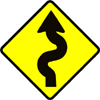
Q: What does the regulation on "Giving Way to Traffic at Road Junction" require drivers to do when approaching a road junction with other traffic?
A: The driver of a motor vehicle, shall on entering a road intersection, at which traffic is not being regulated, if the road entered is a main road designated as such, give way to the vehicles proceeding along that road, and in any other case give way to all traffic approaching the intersection on his right hand.
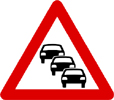
Q: How should drivers respond when a fire service vehicle or ambulance approaches, according to the regulation on giving them free passage?
A: Every driver shall on the approach of a fire service vehicle or of an ambulance allow free passage by drawing to the side of the road

Q: What does the term "Right of Way" mean in traffic regulations, and how should drivers determine who has the priority when navigating intersections?
A: The pedestrians have the right of way at uncontrolled pedestrian crossings. When any road is provided with footpath or cycle tracks specially for other traffic, except with permission of a police officer in uniform, a driver shall not drive on such footpath or track.
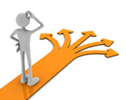
Q: What does this sign Represents?
A: No driver shall take a "U" turn where "U" turn is specially prohibited and on busy traffic road. If a "U" turn is allowed the driver shall slow signal by hand as for a right turn, watch in the rear view mirror and turn when safe to do so.
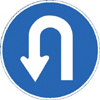
Q: What are the rules regarding the signals that drivers must give, and in what situations are these signals required according to traffic regulations?
A: The following signals shall be used by the drivers of all motors vehicles namely.
1. When about to slow down, a driver shall extend his right arm with the palm down yard and to the right of the vehicle’ and shall move the arm so extended up and down several times in such a manner that the signal can be seen by the driver of any vehicle who may be behind him
2. When about to stop, a driver shall raise his right forearm vertically outside of and to the right of the vehicle.
3. When about to turn to the right or to drive to the right- hand side of the road in orders or pass another vehicle or for any other purpose, a driver shall extend his right arm in a horizontal position outside of and to the right of his vehicle with the palm of the hand turned to the front.
4. When about to turn to the left or to drive to the left hand side of the road, a driver shall extend his right arm and rotate in an anticlockwise direction.
5. When a driver wishes to indicate to the driver of a vehicle behind him that he desires that driver to overtake him he shall extend his right arm and hand horizontally outside of and to the right-of the vehicle and shall swing the arm backward and forward. In a semicircular motion.
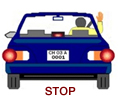
Q: What does this Signal Represents?
A: The signals referred to in regulation 12, may be simplified also by mechanical or electronic devices.
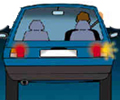
Q: What regulations must drivers follow regarding the parking of their vehicles, including any specific requirements or restrictions?
A: Every driver of a motor vehicle parking on any road shall park in such a way that it does not cause or is not likely to cause danger, obstruction or undue inconvenience to other road users and if the manner or parking is indicated by any signboard or markings on the road side, he shall park his vehicle in such manner.
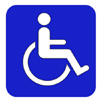
Q: What regulations must drivers follow regarding the parking of their vehicles, including any specific requirements or restrictions?
A: No load or other goods shall be placed on any motor vehicles so as to mask or otherwise interrupt vision of any lamp, registration mark or other mark required to be carried by or exhibited on any motor vehicle by or under Act, unless a duplicate of the lamp or mark so marked or otherwise obscured is exhibited in the manner required by or under the Act for the exhibition of the marked or obscured lamp or mark.
2. All registration and other mark required to be exhibited on a motor vehicle by or under Act shall at all times be maintained in a clear and legible condition.
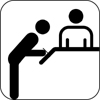
Q: What are the prohibitions for drivers regarding one-way traffic according to the regulation on "One Way Traffic"?
A: Drive a motor vehicle on roads declared "ONE WAY" except in the direction specified by sign boards.
2. Drive a vehicle in a reverse direction into a road designed "ONE WAY".
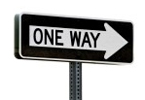
Q: What drivers follow when navigating channelized roads with lane traffic?
A: Where any road is marked by lanes for movement of traffic, the driver of a motor vehicle shall drive within the lane and change the lane only after giving proper signal.
2. Where any road is marked by a yellow line dividing road, the vehicle proceeding in the same direction trying to overtake each other shall not cross the yellow line.

Q: What does this Sign Means?
A: When any line is painted on or inlaid into the surface of any road at the approach to the road junction or to a pedestrian crossing or other wise, no driver shall drive a motor vehicle so that any part thereof projects beyond that line at any time when a signal to stop is being given by a police officer or by means of a traffic control light or by the display of any traffic sign.
2. A line for the purpose of this Regulation shall be not less than 50 millimeters in width at any part and may be either in white, black or yellow.
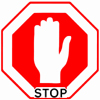
Q: What are the regulations governing the towing of vehicles, including any specific requirements or restrictions that drivers must adhere to?
A: No vehicle other than a mechanically disabled motor vehicle or incompletely assembled motor vehicle, a registered trailer or a side car, shall be drawn or towed by any other motor vehicle, except for purposes of delivery and to the nearest filling station or garage.
2. No motor vehicle shall be drawn or towed by any other motor vehicle unless there is in the driver’s seat of the motor vehicle being drawn or towed a person holding a licence authorising him to drive the vehicle or unless the steering wheels of the motor vehicle being towed, are firmly and securely supported clear of the road surface by some crane or other device on the vehicle which is drawing or towing it.
3. When a motor vehicle is being towed by another motor vehicle the clear distance between the rear of the front vehicle and the front of the rear vehicle shall at no time exceed five meters. The tow ropes, or chains shall be of a type easily distinguishable by other road users and there shall be clearly displayed on the rear of the vehicle being towed in block letters not less than seventy-five millimeters high and on a white background the word “ON TOW”
4. No motor vehicle when towing another vehicle other than a trailer or side car shall be driver at a speed exceeding twenty-four kilometers per hour.

Q: What restrictions apply to the use of horns in silence zones, and why are these rules important for maintaining peace and safety?
A: A driver of a vehicle shall not
1. Sound the horn needlessly or continuously or more than necessary to ensure safety;
2. Sound the horn in silence zones;
3. Make use of a cut-out by which exhaust gases are released other than though the silencer;
4. Fit or use any multitoned horn giving a harsh, shrill, loud or alarming noise;
5. Drive a vehicle creating undue noise when in motion;
6. Drive a vehicle with a muffler causing alarming sound.

Q:How should drivers respond to traffic signs and instructions from traffic police, and what is the significance of complying with these directives?
A: A driver of a motor vehicle and every other person using the road shall obey:
1. Every direction given, whether by signal or otherwise a police officer or any authorized person for the time being in-chance of the regulation of traffic;
2. Any direction applicable to him and indicated on or by notice, traffic sign or signal fixed or operated by an authority, competent to do so;
3. Any direction indicated by automatically signaling devices fixed at road intersection.

Q:Why is it important for drivers to maintain a safe distance from the vehicle in front, and how can this practice contribute to overall traffic safety?
A: The driver of a motor vehicle moving behind another vehicle shall keep at a sufficient distance from that other vehicle to avoid collision if the vehicle in front should suddenly slow down or stop.
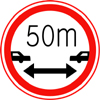
Q: What does this Sign Means?
A: This Sign Means that No driver of a vehicle shall apply brake abruptly unless it is necessary to do so for safety reasons.

Q: What does this Sign Means?
A: This Sign Means that On mountain roads and steep roads, the driver of a motor vehicle traveling down hill shall give precedence to a vehicle going uphill wherever the road is not sufficiently wide to allow the vehicle to pass each other freely without danger, and stop the vehicle to the side of the road in order to allow any vehicle proceed in uphill to pass.

Q: What does this Sign Means?
A: This Sign Means that A driver of a motor vehicle shall not allow any person to stand or sit or anything to be placed in such a manner or position as to hamper his control of the vehicle.

Q: What does this Sign Means?
A: This Sign Means that the driver of a motor vehicle shall, when passing or meeting procession or a body of body of troops or police on the march or when passing workmen engaged on road repairs, drive at a speed not exceeding 25 Km an hour.

Q: What does this Sign Means?
A: This Sign Means that A driver when driving a tractor shall not carry or allow any person to be carried on tractor. A drive of goods carriage shall not carry in the drivers cabin more numbers of persons than that is mentioned in the registration certificate and shall not carry passengers for hire or reward.

Q: What are the specific requirements for securing and managing the projection of loads on vehicles, and how do these regulations help prevent accidents and ensure road safety?
A: No person shall drive in any public place any motor vehicle which is loaded in a manner likely to cause danger to any person in such a manner that the load or any part thereof of anything extends laterally beyond the body or to the rear or in height beyond the permissible limit.

Q: What are the restrictions on carrying dangerous substances in vehicles, and how do these regulations aim to enhance safety on the roads?
A: Except for the fuel and lubricants necessary for the use of the vehicle, no explosive highly inflammable or otherwise dangerous substance, shall be carried on any public service vehicle
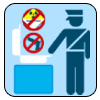
Q: What are the restrictions on driving backwards, and what safety concerns do these regulations address?
A: No driver of a motor vehicle shall cause the vehicle to be driven backward without first satisfying himself that he will not thereby cause danger or undue inconvenience to any person or in any circumstances, for any greater distance or period of time than may be reasonably necessary in order to turn the vehicle round.

Q: What are the requirements for drivers regarding the production of documents when requested by authorities, and why is this process important for road safety and legal compliance?
A: A person driving a vehicle,-
1. Shall always carry with him his driving license, certificate of registration, certificates of taxation and certificate of insurance of the vehicle and in case of transport vehicle the permit and fitness certificate, also;
2. Shall on demand by police officer in uniform or an officer of the Motor Vehicles Department in uniform or any other officer authorised by the Government, produce the documents for inspection.

Our other famous blogs are : Advantages of High Security Registration Plates (HSRP) | How to get Driving license in Noida ? | How to transfer vehicle insurance to new owner ? | Ownership (RC) transfer | How to find vehicle details by vehicle number ? | How to get Driving license in Haryana ?
